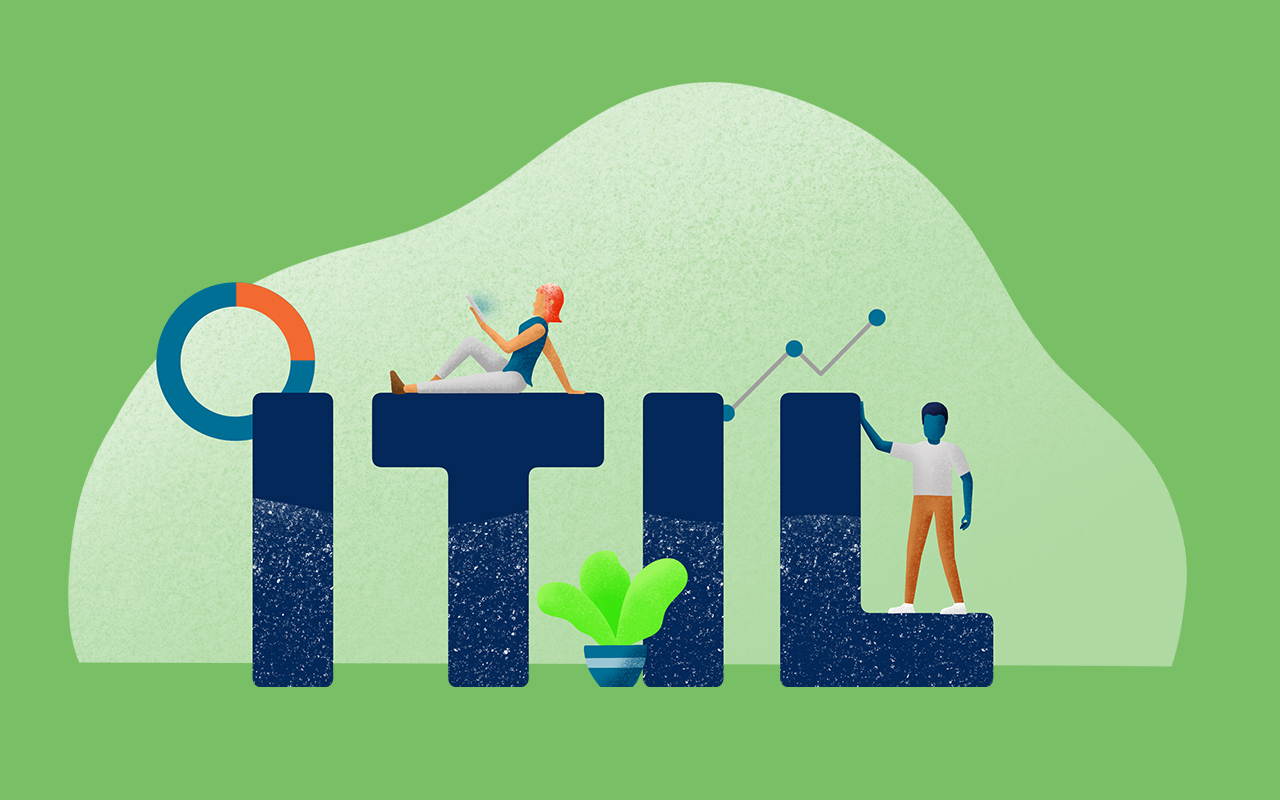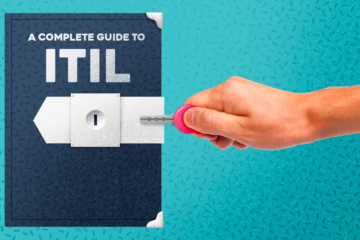American computer scientist and U.S. Navy Admiral Grace Hopper once said, “The most dangerous phrase in the English language is ‘we’ve always done it this way.’” Nowhere is this phrase more applicable than at the IT service desk, where outdated processes can impact the entire business. For this reason, many teams have begun thinking about implementing ITIL 4 (sometimes called ITIL v4) across the IT organization.
Whether you are working in finance, education, insurance, health care, or any number of other fields, the processes at your IT service desk can have a direct impact on business outcomes. Clear, structured processes will encourage your team to avoid shadow IT practices that can put the company at risk of security breaches and compliance issues and will serve to keep your enterprise organized and functioning without major system outages or issues.
In this post, we will go over a few of the basics and benefits of ITIL v4, as well as how to make the switch from ITIL v3/2011 to ITIL 4.
ITIL Basics
Before we can discuss the benefits of ITIL v4 (ITIL 4) and how to switch from ITIL v3/2011 to ITIL 4 (ITIL v4), we must cover the basics of ITIL and its evolution. Axelos defines ITIL as:
“A set of best-practice publications for IT service management. ITIL gives guidance on the provision of quality IT services and the processes, functions and other capabilities needed to support them.”
ITIL also describes best practices, processes, procedures, tasks, and checklists which are not specific to any singular organization or technology. These practices can be applied to knowledge management strategies and can be used with ITSM software.
ITIL began in the 1980’s and has evolved through many iterations and updates, with the most current change, ITIL 4, being released in 2019. You can read more about the evolution of ITIL in this blog post, but for now it’s important to know that ITIL provides a framework that can effectively organize service management processes both inside the service desk and beyond into the enterprise.
What Changed Between ITIL v3/2011 and ITIL 4?
There are a few key differences between ITIL v3/2011 and ITIL 4 (ITIL v4). These include:
- The ITIL v3/2011 service life cycle is no more – well, it’s not officially part of ITIL 4 now. Instead, there are the service value system and service value chain. These underpin ITIL 4’s focus on value co-creation.
- ITIL v3/2011’s 26 processes and four functions have been replaced by 34 management practices.
- ITIL Practitioner’s guiding principles, from 2016, have been adapted and included within the main body of ITIL 4 best practice.
- Continual service improvement is now continual improvement.
- The method of ITIL 4 best practice delivery is now online-subscription based, giving subscribers access to regular updates rather than having to wait a considerable time for the publication of new books (and a new version of ITIL).
There are, of course, many other changes to be aware of, which you can read about in our eBook, ITIL 4 in a Nutshell, but the above are some of the most important. Further, the overarching theme of ITIL 4 shifts the focus from service delivery to customer-centricity and agile thinking.
Why is ITIL 4 Important?
If you’re using ITIL v3/2011, you might be thinking that updating to ITIL 4 is just a major hassle. After all, there is the old saying “if it isn’t broken, don’t fix it.” Your processes don’t need to be inherently broken to become outdated, which is why updating to ITIL 4 should be considered.
We already mentioned that ITIL 4 provides the processes that will help guide people to avoid shadow IT, which can lead to compliance issues (especially in industries like banking). Additionally, ITIL 4 also integrates into the agile methodology more easily, which can help keep up with the rapidly changing demands of digital transformation and new technology.
But going beyond the constant evolution of the service desk and the technology being used by the business, there are a few interesting results from the ITSM.Tools State of Service Management Survey that will help you understand why ITIL 4 is important and will help connect ITIL 4 with the modern service desk. First, the survey shows that agile practices are being used more than the combined-version, and not insignificant, level of ITIL use (ITIL 4 and earlier versions). Second, the survey found that ITIL 4 has the highest level of planned adoption among respondents, and respondents who see their team’s employee experience as the same or better than other companies are significantly more likely to have adopted ITIL 4 already.
This shift in employee experience due to ITIL 4 can be partly attributed to one of the main benefits, which is the greater emphasis placed on value co-creation because of the popularity of collaborative working post-pandemic. Furthermore, ITIL 4 can support teams beyond the service desk in a way that ITIL v3/2011 struggled to.
Perhaps Axelos said it best: “ITIL 4 will provide a practical and flexible basis to support organizations on their journey into the new world of digital transformation by helping them align their human, digital and physical resources to compete within the modern complex landscape.”
How to Change from ITIL v3/2011 to ITIL 4 in ITSM?
We already mentioned that ITIL 4 creates a better synergy between ITIL and Agile and a few of the ways that ITIL can help your team stay focused, especially in light of modern service management tools like chatbots and AI being added into the mix. But the big question comes in the how. How do you change from ITIL v3/2011 without causing a major shakeup?
To start, your IT service management tool will begin transitioning away from ITIL v3/2011 in future months and years. You might see this in the form of updated change and release management processes or even simple incident management processes first.
Going one step further, Axelos offers courses to help you become an ITIL master in the form of a strategic leader or managing professional. This will help you understand the key changes and differences between ITIL v3/2011 and ITIL 4 that simply aren’t covered in many eBooks or surface-level webinars.
ITSM.tools has an excellent resource in this post to help you understand the best way to transition your organization to ITIL 4, but the key is to start where you are and progress iteratively with feedback as you incorporate the new practices of ITIL 4. Remember, there are likely people on your team who have been working with ITIL v3/2011 for their entire careers, so the transition may require team members to take additional courses or spend a little extra time learning as well. However, you’ll likely find the transition to be worthwhile in the end.
Conclusion: Learn More About ITIL
There are several benefits of ITIL 4 in ITSM that make it a must-have for your service desk. To begin learning about all of the changes in ITIL 4, download our free eBook, ITIL 4 in a Nutshell. To learn how ITIL is incorporated into an IT Service Management solution and understand your current ITIL maturity level, get a demo from one of our experts today.





